
Become a member
Join today and help protect nature, beauty and history – for everyone, for ever. Enjoy access to more than 500 places with National Trust membership.
Expect the unexpected. Incredible innovation, devastating loss, remarkable survival and magnificent restoration all in one place.
near High Green, Worcester, Worcestershire, WR8 9DW
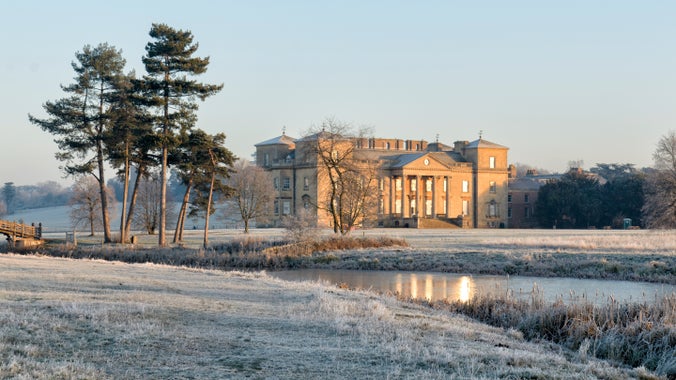
| Asset | Opening time |
|---|---|
| Park | 09:00 - 16:00 |
| House | 10:00 - 16:00 |
| Restaurant | 09:00 - 16:00 |
| Shop | 09:30 - 16:00 |
| RAF museum | 11:00 - 16:00 |
| House tearoom | 11:30 - 15:30 |
| Ticket type | With Gift Aid | Without Gift Aid |
|---|---|---|
| Adult (18+) | £18.70 | £17.00 |
| Child (5-17) under 5s free | £9.40 | £8.50 |
| Family (2 Adults and up to 3 children) | £46.80 | £42.50 |
| 1 Adult Family | £28.10 | £25.50 |
| Group (Adult 18+) | £16.15 | |
| Group (Child 5-17) | £8.08 |
There is also a Changing Place facility on site
Designated mobility parking in main car park. Accessible toilet. Trampers available to book. Dogs on leads welcome in visitor reception, the parkland, and shop. Assistance dogs only in the RAF Museum, house, and cafe.
Accessible map available at Visitor Reception on request.
Toilets are available in the RAF Visitor Centre and a portable accessible toilet is available on the South Lawn by the house.
Access is via a Radar key. Spare keys are located at Visitor Reception and in the Cafe. Facilities are open along with site opening times.
Changing Places - more informationAmple blue badge parking spaces are available near the RAF Visitor Centre in the main car park.
Visitors can be dropped off by blue badge parking which is next to the RAF Visitor Centre. There is a short walk to Visitor Centre where you can hop on the shuttle bus or collect the keys to your pre-booked tramper.
Available in all of our front-facing spaces such as the café, shop and Visitor Reception.
Level access to RAF Visitor Centre café.
Ramp access to the shop, located just past the RAF Visitor Centre, and there is space for wheelchairs and small personal mobility vehicles inside the shop.
To book please call 01905 370 002. They are free to hire but we welcome you to leave a suggested donation of £5 towards their upkeep.
Ramped access to the shop, level access to the café and RAF Visitor Centre, and RAF Museum. The main house has stepped entrances but we have a stair climber so wheelchair users can be assisted into the main showroom level.
Arm rest seating available in RAF Visitor Centre café. Benches are located along the main visitor route.
The main house has stepped entrances but we have a stair climber so wheelchair users can be assisted into the main showroom level.
The main house has stepped entrances but we have a stair climber so wheelchair users can be assisted into the main showroom level. Uneven terrain on gravel pathways and grassy areas throughout the parkland.
We have 2 standard wheelchairs to borrow while on site. The standard wheelchairs can either be self-propelled or pushed by a companion. These are issued on a first come, first served basis from the Visitor Reception.
Croome National Trust - what3words: ///protects.latest.flotation
Discover Christmas at Croome after dark, with glowing interiors and an illuminated light trail through the park
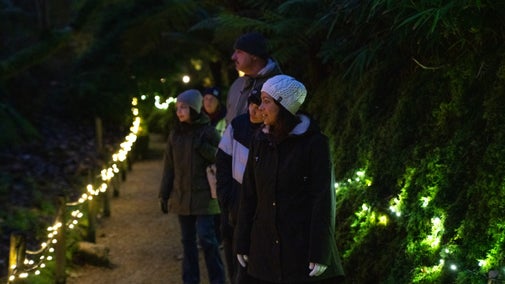
Croome is a two pawprint rated place. Find out everything that you need to know about walking your dog at Croome, including the canine code and where to find doggy facilities.


Take the Worcestershire On Demand bus to Croome or Hanbury Hall and enjoy a free hot drink. Terms and conditions apply.

We're passionate about making Croome accessible to all needs and disabilities.

At the heart of the parkland lies the house, the brainchild of the 6th Earl of Coventry, an 18th-century trend-setter who collaborated with the best new talent of the day – Robert Adam and Lancelot ‘Capability’ Brown.
With art installations, exhibitions, historic collection displays and the remarkable house itself, there are a myriad of things to see, do and explore inside at Croome.
Discover the secrets of the Second World War airbase, where In the 1940s, RAF Defford housed over 2,000 service personnel and scientists who tested radar to meet new enemy threats.
Discover the many historic buildings that are located within the parkland and wider estate at Croome. Marvel at the diversity of plants from around the globe in the historic 'Capability' Brown designed landscape.
Discover our natural play area, RAF themed playground, and sensory Potter and Ponder map.
Our shop and plant centre are open daily. Find gifts that do good. Every penny spent in our shop goes towards the work we do at Croome in caring for nature, beauty and history.
Our cafe is open daily and located in the Visitor Centre which was restored from ruined RAF wartime buildings.
The Walled gardens are now closed for 2025 and will reopen on 4 April until 27 September 2026. The privately owned historic Walled Gardens are a key part of Croome’s landscape designed by ‘Capability’ Brown. £7 admission includes NT members.
This Christmas, experience the magic of Rapturous Delight, with glowing interiors, immersive projections, and special after-dark events featuring a new illuminated light trail through the garden.
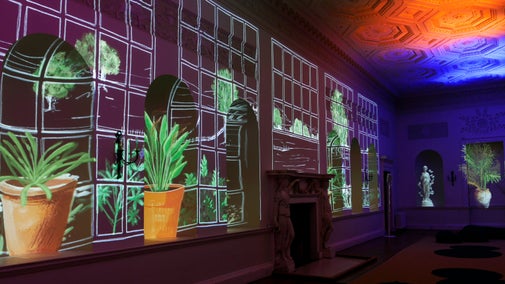
Plan your family adventures at Croome in the natural play area and RAF themed playground

Experience the magic of Rapturous Delight after-dark. Immerse yourself in the glowing interiors and projections in the house and marvel at the new illuminated light trail through the garden.

Croome has worked with artist Faye Claridge and local community groups to create new sculptures in response to the Four Seasons statues that once stood within the Evergreen Shrubbery.
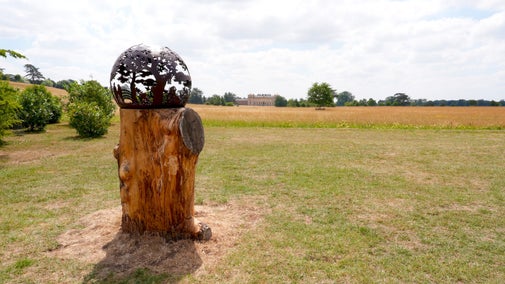
With commanding views over the Malvern Hills, the ‘Capability’ Brown landscape was designed to impress. Rescued from almost total loss, today Croome’s parkland with its serpentine river, tree lined lake, and elegant garden buildings is a perfect place to get outdoors and enjoy spending time in nature.

This circular walk will guide you around the 'Capability' Brown landscape at Croome in Worcestershire. On a clear day you will be rewarded with far-reaching views across the Worcestershire countryside to Croome's outer eye-catchers and follies in the distance.

The parkland at Croome came into our care in 1996 and, with over £8 million spent on restoration and conservation, it has been returned to its former glory and transformed into a beautiful place to explore. This circular walk highlights the work that has been done to look after the parkland.

With about four-fifths of its collection absent, the rooms in the House at Croome, many with beautiful 18th-century plasterwork and fireplaces, are used to present temporary exhibitions and installations continuing the 6th Earl’s legacy of nurturing new talent. Please be aware the house will be closed for periods in November - Please read this article for full details.

Discover Croome's Second World War secret. Visit the RAF Museum and find out more about the experiments and developments which took place at Croome, as well as some of the personal histories of the people who lived and worked in this secret place.
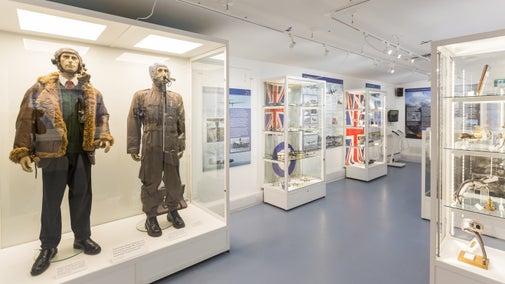
Celebrate the 200 year anniversary of the publication of the 1824 guidebook to Croome, the Hortus Croomensis. Explore the views, scents and sounds of the garden at Croome using your own Hortus Croomensis booklet to guide you.

Discover more about the privately owned Walled Gardens at Croome, home to large greenhouses, a rose garden and vegetable plots. The Walled Gardens are closed now for 2025 and will reopen weekends and bank holidays 4 April until 27 September 2026 .

Leave the busy high street behind and find gifts that do good in Croome's National Trust shop.

Treat yourself in the Cafe at Croome, located in restored RAF wartime buildings, where you'll find a range of hot and cold drinks, seasonal meals and sweet treats. Every penny spent goes towards the work we do at Croome in caring for nature, beauty and history.

Enjoy this scenic 2.5-mile circular walk around the 'Capability' Brown-designed landscape in the parkland at Croome.

A 4-mile circular walk around the parkland at Croome exploring the areas, follies and monuments that have been restored since conservation began in 1996.

Explore Croome's parkland with the whole family on this buggy and wheelchair friendly walk, taking in the main highlights of the estate.

Enjoy this leisurely circular walk and its opportunities to discover Croome's outer parkland and springtime flora and fauna beginning to emerge.


A great spot for watching birds and butterflies near the Clent Hills with miles of walking trails nearby.

At the entrance to the Hanbury estate, this handsome lodge has miles of walking trails on the doorstep.

A second floor apartment within Hanbury Hall with stunning views over the 18th century Parterre.
Rapturous Delight, Croome's festive sensory experience, returns for Christmas 2025, with glowing interiors, immersive projections, and a festive feel throughout.
Celebrate the 200 year anniversary of the publication of the 1824 guidebook to Croome, the Hortus Croomensis. Explore the views, scents and sounds of the garden at Croome using your own Hortus Croomensis booklet to guide you.
Experience the magic of Rapturous Delight after-dark. Immerse yourself in the glowing interiors and projections in the house and marvel at the new illuminated light trail through the garden.
Pages from Nature is a 200-year anniversary exhibition celebrating the publication of William Dean’s Hortus Croomensis; a detailed record of the vast and varied plant collection at Croome in 1824.
Join our volunteers for a tour that will bring Croome’s story to life; with its varied history you’ll definitely learn something new.
Find out more about Croome’s history, design, plants and statues on an hour’s stroll in the garden with one of our knowledgeable volunteers.
Visit the Panorama Tower, built in 1801 by James Wyatt for the 6th Earl of Coventry. Enjoy panoramic views of the countryside from the balcony.
Join us for a 5 mile guided walk through the parkland to the Panorama Tower and enjoy fantastic panoramic views from the balcony before continuing back to the Visitor Centre.
Expect the unexpected. Incredible innovation, devastating loss, remarkable survival and magnificent restoration all in one place.
There’s more than meets the eye at Croome. Owned by the Coventry family since the 16th century, Croome has a fascinating history. The Coventrys used their wealth – from successes as statesmen and lawyers, colonial connections and advantageous marriages – to create this magnificent place.
Discover the history of the House at Croome, from its beginnings as a mansion house, to its various uses in the 20th century.

Read about Croome's eclectic history, as a home to the 6th Earl and the Coventry family, its time as RAF Defford's airbase, a school for boys, Hare Krishna centre, and the people that helped shape it.

Croome was 'Capability' Brown's first commission. Not only did he re-design the whole landscape but also remodelled Croome Court.

Discover the major conservation work we’ve undertaken at Croome Court, as part of a Heritage Lottery Funded project to protect the house from further deterioration.

Take a look at some of the conservation and restoration projects that have taken place in the estate at Croome.

Discover the volunteering opportunities currently available at Croome, and how you can get involved.

Explore the objects and works of art we care for at Croome on the National Trust Collections website.


Join today and help protect nature, beauty and history – for everyone, for ever. Enjoy access to more than 500 places with National Trust membership.
By sharing your email address you’re agreeing to receive marketing emails from the National Trust and confirm you’re 18 years old or over. Please see our for more information on how we look after your personal data.